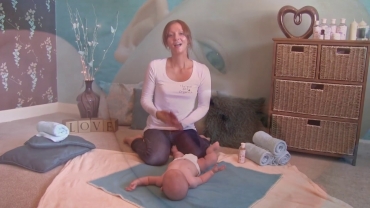Regardless of the position used for breastfeeding, your baby should be tucked in close – tummy to tummy and chest to chest – with her head tipped back slightly. Your hand should support your baby’s shoulders without any pressure on your baby’s head. Some babies can latch or attach to the breast all by themselves or with little help. Other babies need more support.
With your baby’s chin against your breast, direct your nipple towards your baby’s nose. Gently tickle the baby’s mouth with the breast, lightly brushing your breast back and forth. This encourages your baby to open her mouth. When your baby opens wide, bring baby to your breast, keeping your nipple high in her mouth.
If you are having difficulty helping your baby feed at any time, try putting her skin-to-skin while you lie back supported with pillows. This mother is laying back with her baby between her breasts. The baby’s body is moving towards the breast with her face moving back and forth until she finds the breast. She then opens her mouth wide enough to grasp a large mouthful. This is often how babies latch the very first time they feed.
The size of your breasts can also change how you help your baby latch. This mother has larger breasts. She uses her hand to support her breast to make it easier for her baby to latch. She keeps her fingers well back from the areola so that her baby is tucked in very close to her. This mother has smaller breasts and does not need to hold her breast for her baby to latch.
Watching your baby’s feeding behaviours will give hints as to how well she is feeding. Once your baby has latched, she will start to suck. After a brief pause, the rhythm of sucking changes. The movement of the chin and jaw gets noticeably bigger and the muscles by your baby’s temple move. Listen for your baby’s swallowing, you may be able to hear a ‘ca’ sound. When your baby is feeding well, there will be several bursts of sucking and swallowing.
This baby is not feeding very well. He continues to suck with small, quick movements of his jaw and with very little swallowing. This may mean that he is not latched well or is too sleepy to feed.
When your baby is finished feeding, she will let go of the breast and appear content. Your nipple should look round and pulled out. It should not look flattened or ‘squashed’. A misshapen or damaged nipple usually indicates a poor latch. This may cause the nipple to get increasingly sore and may prevent a damaged nipple from healing. Other signs that your baby is feeding well include enough wet and poopy diapers, and being content after most feedings.
- 10392 views













